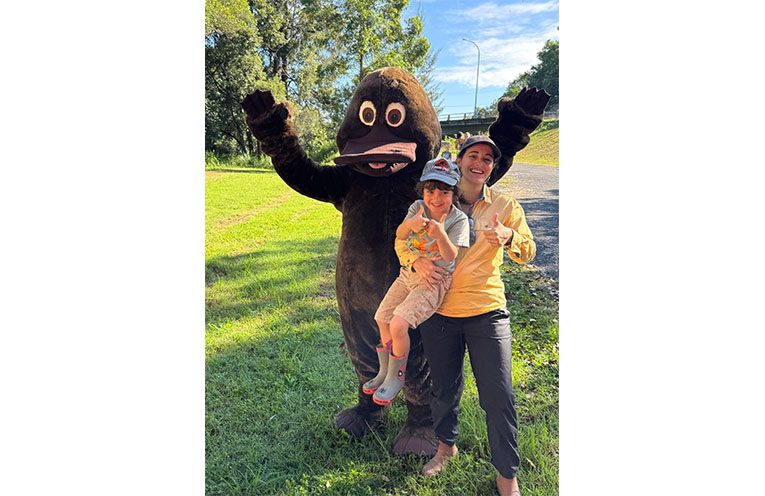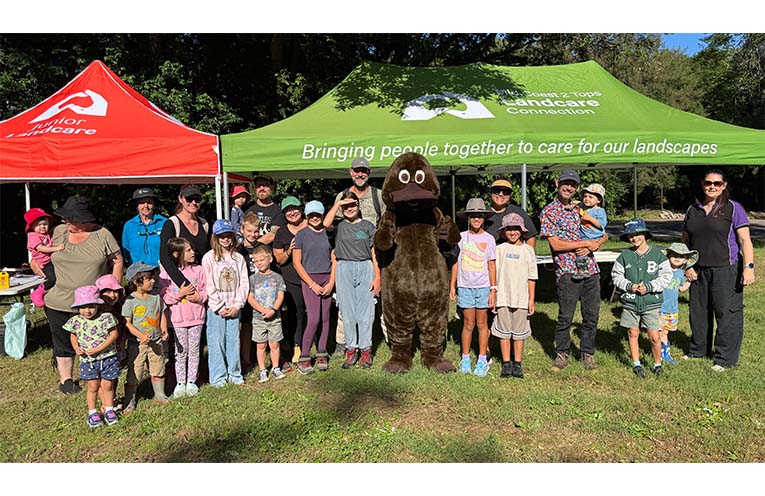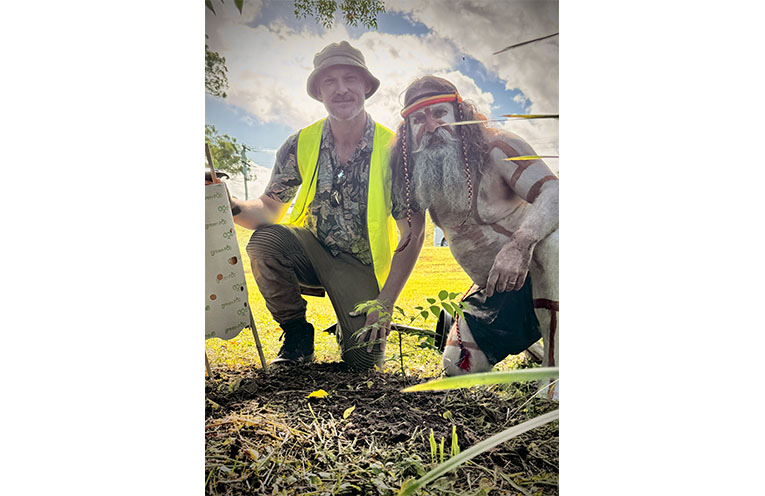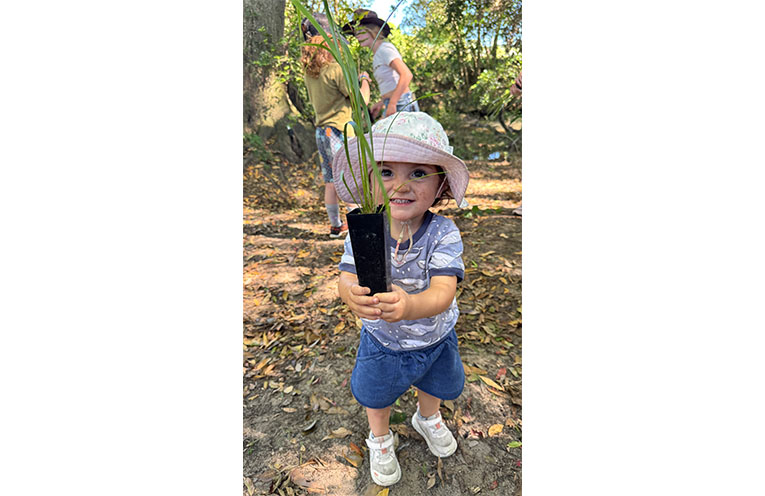KIDS and adults alike have gotten their hands dirty as part of a renewed Landcare effort around Stroud this Autumn.
Two new Landcare groups have formed across the Barrington Rivers region, to help the community protect creeks and local wildlife.
“We’re especially excited about empowering kids as ‘River Guardians’, through schools, Landcare groups and creative workshops,” co-organiser Rachel Barry told News Of The Area.
“Our vision is to raise a generation of young river guardians who feel a deep connection to ‘place’, and understand the importance of looking after the waterways and the animals that call them home.”
The Stroud Junior Landcare members are a passionate group of young environmental stewards, learning through hands-on activities like tree planting, water testing, and discovering native species, all focused on caring for Mill Creek and its thriving platypus population.
Recent events included a launch day at the Stroud Showgrounds featuring creek walks, games, and nature discovery.
It included a homeschool workshop where “Yapii”, the new platypus mascot, joined in for a day of science, storytelling, and connection to nature.
With the express aims of building connection, joy and collective purpose, these groups are about more than conservation.
“We’ve partnered with MidCoast Council to conduct water quality and macroinvertebrate testing, helping kids understand the science behind healthy waterways,” Rachel said.
“By caring for our waterways, we’re also nurturing a sense of shared purpose and belonging.”
The Stroud Community Rivercare group began with a fully booked pre-launch workshop featuring guest presenter Dr Gilad Bino, a platypus researcher from UNSW, and a walk along Mill Creek to explore habitat and discuss restoration plans.
The group’s official launch included a smoking ceremony led by Worimi Traditional Owner Justin Ridgeway, who planted a red cedar tree as a symbol of renewal and regrowth, acknowledging the history of red cedar logging in the region.
Volunteers then planted over 200 lomandra grasses to support creekbank restoration.
On Mother’s Day, families gathered by the creek to plant more than 100 native trees and grasses, some in memory of mothers who had died.
The plantings are continuing the effort to stabilise banks after flooding and protect precious platypus habitat, as there are now regular sightings.
“The idea was developed while participating in the Rural Aid Community Builders program, the aim… being to unite the region in a way that combines the three key themes of environment, farming and agriculture, and the arts,” Rachel said.
“We are engaging local artists and hope to have a platypus themed art installation included in each participating town.”
A local author has even written a children’s book about the platypus, which is due to be published by the end of the year.
In addition, Katherine Warrick, a researcher from the University of Western Sydney, is studying PFOS contamination in platypuses – a chemical best detected in liver tissue.
“During flood clean-up, if anyone finds a deceased platypus, it could contribute to vital scientific research.”
The animals can be carefully bagged and placed in a freezer ahead of contacting Katherine through the University.
By Thomas O’KEEFE
You can help your local paper.
Make a small once-off, or (if you can) a regular donation.
We are an independent family owned business and our newspapers are free to collect and our news stories are free online.
Help support us into the future.






